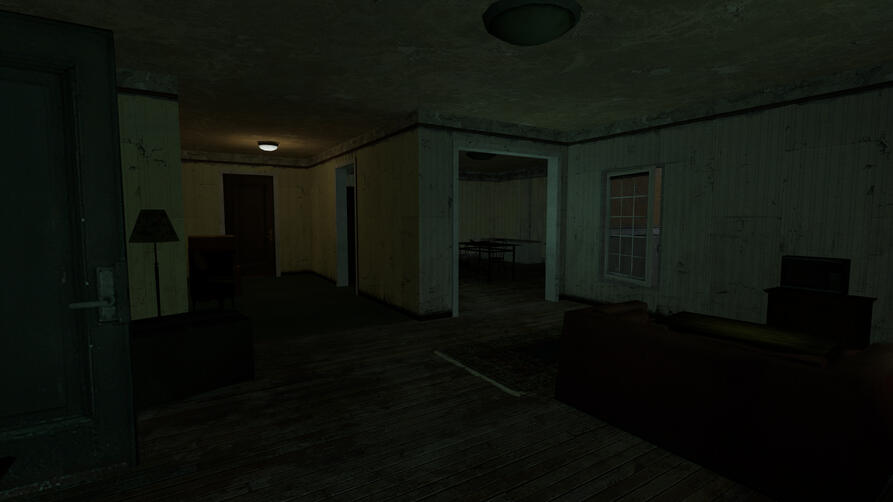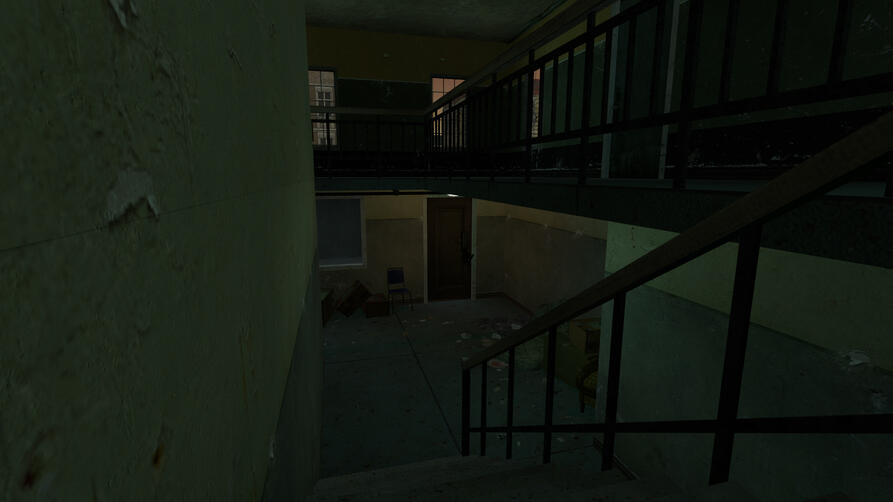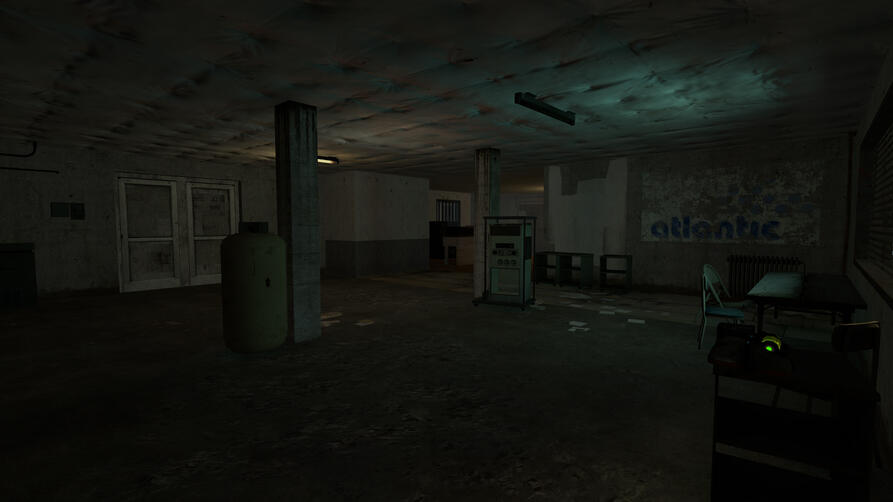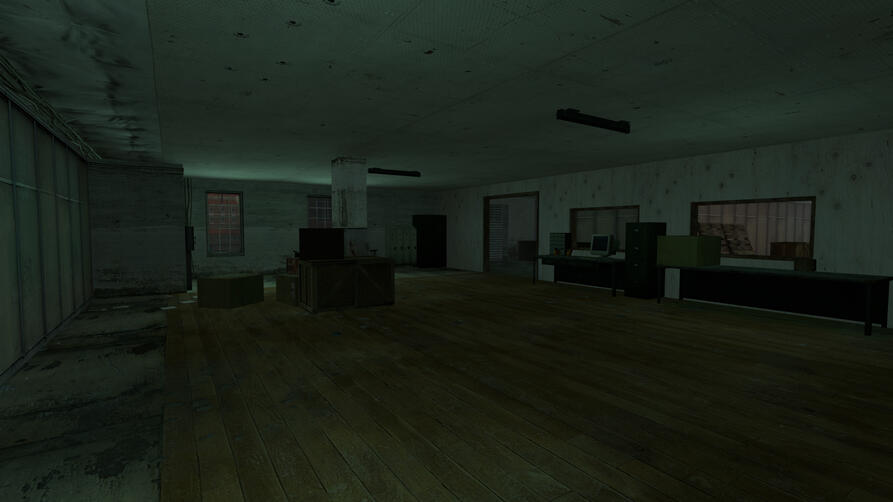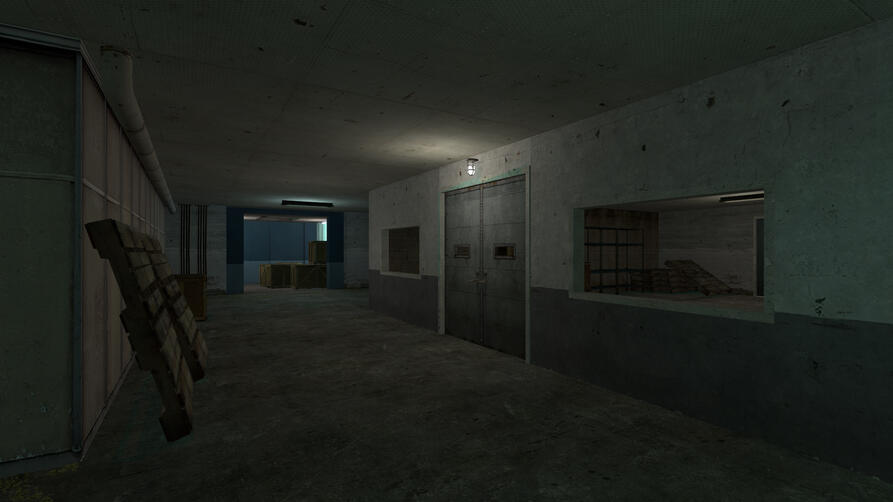Admir Burnić
level designer

Control 2
The sequel to the award winning game 'Control'.
The game is currently in development and I will update the page in the future.
My responsibilities Includes:
Prototyping and implementing puzzles.
Designing multiple quests and responsible for taking them from concept and paper design to the early functional stage.
Blocking out quest areas.
Working closely with art to develop building kits used to create Control 2's world and quest locations.
Prototyping gameplay moments to prove key gameplay mechanics for the proof of concept.
Alan wake 2
Alan Wake 2 was one of my most defining experiences in the industry as a level designer. As a fan of horror, single-player, and narrative-driven experiences, it's always been a goal of mine to work on a project of this caliber. And the overwhelmingly positive reception has been a dream come true, it's been humbling, to say the least.I have been working on the project for approximately 3 years. I joined during pre-production and saw it through all the way to shipping. My work mostly focused on Alan's twisted nightmare called the Darkplace, but I also got the opportunity to contribute to Saga's more grounded 'Real World'.
Darkplace
My Responsibilities included:
Early into the development, I was tasked with exploring the design of puzzles and to help define how we used certain key mechanics in puzzles, such as the light-shifter, darkness barriers, seamless teleports, and plotboard elements. I worked closely with my lead and directors to design and implement various puzzles that we could use as a benchmark for future Darkplace puzzles.
I was also tasked with prototyping combat scenarios and encounters with the Dark Presence in early production, to help find a direction in how we designed future encounters. This included a lot of close collaborative cross-discipline work.
Working adaptively, moving between different tasks, and supporting other level designers depending on project needs.
A big part of my work was on the main missions of Darkplace which also included ownership of multiple missions from early production to final quality. Starting with paper design, top-down drawing, and flowcharts. Then creating blockouts, implementing mission logic using LUA scripting, and working closely with other disciplines, leads, and directors.
My biggest contributions were on the main missions, Initiation 2: Casey, Initiation 4: We Sing, Initiation 5: Room 665, and Initiation 8: Zane's Film.
Initiation 2: Casey
Worked on the blockout of various areas during pre-production and pre-alpha.
Designing and implementing "Light-Shifter" puzzles and "Words of Power" Puzzles.
Designing and scripting combat encounters.
Initiation 4: We Sing
Creating blockouts for various sections throughout the mission.
Designing and blocking out the layouts for the combat spaces.
Designing, implementing, and scripting the combat encounters.
Implementing and scripting mission logic.
Initiation 5: Room 665
Mission owner during pre-production to the mid stages of development. Followed by co-ownership with fellow Level Designers.
Designing the mission flow.
Designing and blocking out the hotel Layout while working closely with Environment Art.
Responsible for designing most of the puzzles and traversal gameplay.
Prototyping, designing, and implementing the Dark Presence encounter and other combat encounters throughout the mission.
Initiation 8: Zane's Film
Mission owner from pre-production to release.
Designing mission flow and structure.
Designing and prototyping the narrative-driven gameplay sequences.
Creating blockouts for various mission areas, while collaborating closely with Environment art.
Designing and implementing puzzles
Implementing and scripting advanced mission logic.
Created systemic scripts used particularly for this mission.
Real World
For the Real World, I worked mostly on designing, implementing, and scripting set-piece combat encounters. The most notable combat encounters I was responsible for were the "Dark Ocean Summoning" fight and the "Nightingale Morgue" fight.
Dark Ocean Summoning Fight
I worked on the Dark Ocean Summoning encounter from early pre-alpha to final quality. My responsibilities included:
Creating a systemic script for the encounter that would spawn waves of enemies in various numbers based on the intensity and progression of the song. I intended to make a script that was easy to use for relatively quick iterations on the flow, difficulty, and intensity of the combat.
Gather and apply feedback from playtests and user research, to find a nice difficulty balance.
Working closely with game design, audio, artists, and directors to create an intense, fun, and cohesive experience.
Nightingale Morgue Fight
I worked on the Morgue fight from concept to final release. Responsibilities included:
Working closely with the Game Director, Game Designers, and AI Designers to create an engaging combat encounter.
Implementing and scripting the encounter logic.
Working closely with User Researchers and QA to solve design flaws and bugs, to create a more cohesive and engaging experience.
Crossfire X: Campaign
Crossfire X: Operation Spectre was my first project at Remedy Entertainment.
As a big fan of FPS, single-player campaigns, it was an exciting opportunity for me to work on this project.
I got to work with some of the things I enjoy doing the most, which are designing mission flows, combat encounters, and memorable set-piece moments.I joined the project back in 2019 during early alpha and I got to see the project through all the way to release. I got the opportunity for ownership of the Chapter 2 mission, including various responsibilities in other levels as well.
Chapter 2: Fugitive
My Responsibilities included:
Owner for the Chapter 2: Fugitive mission from late alpha to release.
Designing, implementing and scripting combat encounters.
Creating and maintaining mission documentation.
Scripting friendly NPC behaviors, while working closely with Game and AI Designers.
Designing blockouts and layouts for combat arenas and encounters, while working closely with Environment Art to maintain a cohesive look and player experience.
Designing and scripting various parts of the "car chase" (the final sequence of the mission) set-piece moment. While working closely with VFX, Environment Art, and Game Design to create a cool and memorable set-piece sequence.
Chapter 5: Ghost
In chapter 5 you get to play as the "Ghost", a character with superhuman strength abilities. Not only do you run faster, jump higher, and hit harder, but you also have a cloaking ability where you can become invisible.
Designing combat encounters and layouts for this was a fun and rewarding challenge. It was different from the rest of the game, so it required a lot of research, prototyping, and testing to find an experience that was fun and engaging to the player.
My Responsibilities included:
Prototyping combat encounters for the Ghost gameplay in the early development stages of the mission, while working closely with Game Design, Leads, and Directors.
Designing, testing, and trying out different approaches to combat space layouts, to find what worked best for the unique gameplay mechanics of the Ghost character.
Designing, implementing, and scripting combat encounters, while working closely with Game Design and other Level Designers.
Working closely with narrative design to implement collectibles and maintain documentation.
Overkill's: The Walking Dead
I joined this project as an intern back in 2017. My work on Overkill’s: The Walking Dead was focused entirely on Level Design. I supported the level design team in the final phases of development with bug fixing, level maintenance, and polishing across multiple levels.After the initial release I worked on multiple DLC levels, implementing gameplay and owning features from concept to completion. Most prominently I worked on a Season 2 DLC story mission where I was responsible for greyboxing, designing, scripting encounters, and taking the level from early production to completion.
My Responsibilities included:
Designing levels, and creating blockouts.
Conceptualizing, prototyping, and implementing new puzzles.
Designing combat arenas and layouts, as well as designing, implementing, and scripting combat encounters and scenarios.
Collaborating with other disciplines such as Environment Art to direct level dressing, or with Tech Design to implement game mechanics and features, as well as Narrative to implement voice-over lines.
Level maintenance for multiple levels.
Bug fixing and polishing in the late stages of development.
Implementing new features into previously released content.
No Sanctuary
The gameplay is often centered around the Town and the church area. Both of them provide important munition and fuel resources to the teams. Controlling these resources is vital if a team is to win.
Town Overview
Has a heavy focus on chokepoints and close-quarter combat.
A lot of tight spaces makes tanks vulnerable.
Close quarters can make infantry very effective.
Iterations
Church
The original design for the church area was a bit too open and was lacking in height differences. This made the church and its surroundings feel flat and boring.
Church iteration
A more organic layout.
Added some more subtle height differences in the terrain.
Added a river to the eastern side, which also runs through the town. This made the church area feel more connected to the town and the rest of the map.
Added some areas more suitable for close-quarter combat near the church for more variety in gameplay.
Crackdown
Crackdown is a Half-Life 2 map created for a mod called "Rogue Research". The mod consists of 12 levels that together form a single-player campaign.Crackdown is the first level in the mod and has its focus on storytelling through environment design and scripted events.
Design
My goal for the very beginning was to create a level that would set the mood for the rest of the campaign. I wanted to challenge myself by making a map that had minimal combat. And instead focused on storytelling through scripted events and the environment.The level takes place in a ghetto bordering an Industrial complex. I wanted environments to change when advancing through the level to create a greater feeling of progression.Players will slowly move through a ghetto and towards industrial alleyways, avoiding and fleeing from the Metropolice patrolling the areas.
Story through Level Design
You play as a civilian who wakes up during a violent government crackdown. The player must quickly flee the area or risk getting captured or killed.I put a lot of emphasis on making the level feel very cinematic, through scripted events and environmental storytelling to establish the world and story.
Development Process
I started by drawing up paper designs that mapped out all main areas, flow, and the scripted events.Playtesting together with script and design iterations continued for 3 weeks before moving on to making a detailed blockout.With a detailed blockout in place, I could start the process of dressing the map, lighting, and postprocessing.
Crackdown
CTF-Haze is a Capture-the-flag 5v5 map for Unreal Tournament. It is a small and compact map that emphasizes fast-paced gameplay.This map was made during my studies as a Level Designer at The Game Assembly. It was during an Unreal Engine course in which we had 8 weeks to create an Unreal Tournament map.
Research & Getting Started
I began looking at what kind of assets and resources were available from Unreal Tournament. which gave me the options for the types of environment I could make.I took inspiration from the canyon theme in the 'FR_fort' map and the sci-fi theme from the map 'Outpost 23'.I felt that a sci-fi theme mixed with a canyon environment would be an interesting contrast and would complement one another.
Layout & Design
After testing a couple of different quick layouts on paper I eventually decided to go with a 3 lane structure and a symmetrical design. I felt that a symmetrical design was more suitable for the competitive gameplay of Unreal Tournament. Also due to time constraints a symmetrical layout would be quicker to design and to iterate on to create a well-balanced map.The map layout does have some slight asymmetrical aspects to it to make the environment feel more natural and realistic, but overall no team has any clear advantage.
Process & Iterations
I started by blocking out the three main lanes and establishing all major line-of-sight blocking elements. With the map's basic flow in place, I started playtesting.Most early feedback had to do with the map's overall size. The distance between the two flags was too small which meant that bringing the enemy flag back to base was often too quick and easy. Another complaint by playtesters was the lack of cover in the middle map area.The early blockout was designed with the translocator weapon in mind. Players would have to use the translocator to access certain places, for example, the sniper platforms.
This made the flow a bit choppy as players had to stop and switch to the translocator to keep on moving. Ultimately I wanted a more straightforward flow, so I added ramps for easier and quicker access.After a week of playtesting and Iteration, I settled on a final blockout. At that point, I could begin propping the map, and work on proper lighting and post-processing.
Hi, I'm Admir Burnić
I'm a level designer based in Helsinki, Finland. I am currently at Remedy Entertainment, where I'm working on the sequel to Control.I have 6+ years of experience with AAA games and I've shipped 3 games in total so far. For the last 5 years, I have been a level designer at Remedy, which has given me an advantageous and unique perspective on level design within narrative-driven games. I'm especially interested in the holistic point of view of levels, and how all aspects like pacing, visuals, mood, and design come together to create a memorable experience.My goal is to continue working on AAA titles at the highest level I can and continue to grow and build on the skills that I have developed so far.Email: [email protected]
Phone: +46 737 24 35 52



































